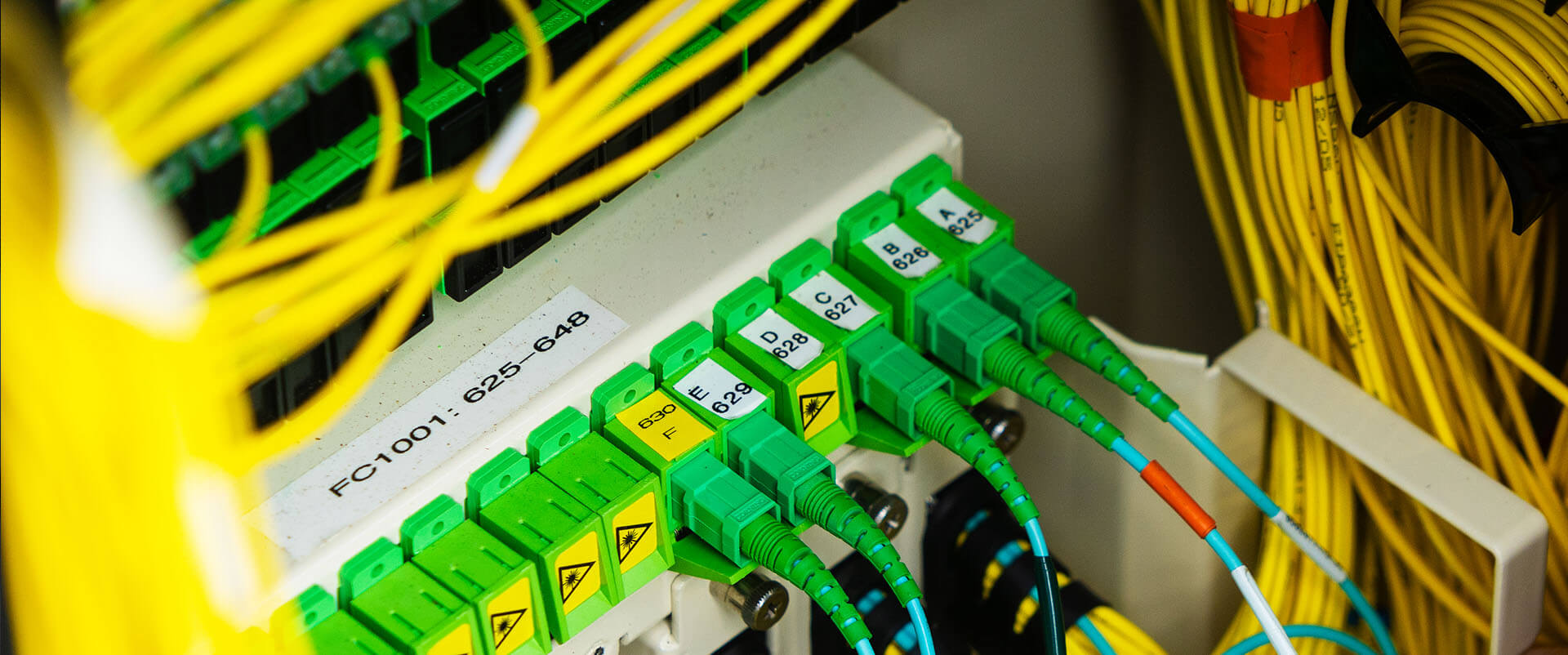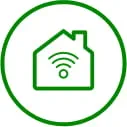What is gig-speed fiber internet?
Imagine this: you’re streaming your favorite show, someone’s in the other room on a Zoom call, your kid’s gaming online with friends and you're still downloading a huge work file — all at the same time. But instead of buffering, lagging or dropped connections, everything just works. That’s the magic of Gig speed fiber optic internet. It’s fast, reliable and built for the way we live today.
Gig speed in a nutshell
Gig speed internet refers to a network connection that delivers speeds up to 1 gigabit per second (Gbps). To put that into perspective, 1 gigabit equals 1,000 megabits (Mbps). Compare this to older DSL or cable connections that might max out around 100 Mbps, and it’s clear: Gig speed internet is about 10 times faster.
This kind of speed is delivered through thin fiber optic cables, which use light signals to transmit data. Unlike traditional copper wiring, which can slow down due to electrical interference or distance from a network hub, fiber optic cables maintain their speed and quality even over long distances. So, whether you’re working from a remote location or in the heart of a city, fiber optic internet is the fastest and most reliable option available.
Is Gig speed internet right for your needs?
Okay, so Gig speed internet is fast — really fast. But do you really need all that speed? Well, let’s consider some common scenarios where Gig speed makes all the difference.
- Multiple devices: The average U.S. household now has more than 20 connected devices, yes, 20! Phones, tablets, smart TVs, gaming consoles, laptops, smart thermostats and even your fridge — everything’s online. And with everyone doing something different at the same time, slower internet just won’t cut it.
- Streaming in HD or 4K: Streaming services offer shows and movies in ultra-high definition (4K). While high-definition streaming needs around 5 Mbps, 4K streaming demands up to 25 Mbps per device! If multiple people in your home are streaming at the same time, Gig speed ensures that everyone gets a smooth, buffer-free experience.
- Online gaming: Gamers know all-too-well the pain of lag — when your connection can’t keep up, it’s game over! Gig speed internet reduces latency (the time it takes for data to travel from your device to the game server and back) and ensures a rock-solid connection. So, whether you’re playing Fortnite or exploring the vast world of Elden Ring, you’ll gain a competitive edge with Gig speed.
- Work from home: If you work from home, you’re likely on a regular schedule of video calls. Gig speed makes video conferencing seamless, even with multiple people on the same connection. It also helps with large file uploads and downloads, especially if you work in data-heavy industries like graphic design, video production or software development.
- Smart homes: The rise of smart home devices means more data is being used all the time. From smart security cameras to AI-driven assistants like Alexa or Google Home, these devices are constantly communicating with servers in the cloud. Gig speed internet can handle the load easily, keeping your smart home running smoothly.
Why Ziply Fiber offers 10 Gig internet
If 1 Gig is great, then why stop there? Well, we decided not to. We offer 10 Gig internet, pushing the boundaries of what’s possible.
So, what’s the difference between 1 Gig and 10 Gig? Well, 10 Gig is 10 times faster — that’s up to 10 gigabits per second. You might think, “That’s a lot of speed for just one household,” and you’d be right. But because of all the reasons we just mentioned, 1 Gig might not cut it for much longer.
Here are some additional reasons Ziply Fiber offers 10 Gig:
Future-proofing: The internet isn’t getting any slower. As technology advances, the need for faster internet grows. 10 Gig internet prepares you for future demands — whether it’s ultra-high-definition streaming, virtual reality gaming or whatever might come next.
Symmetrical speeds: Most traditional internet services have slower upload speeds than download speeds. With Ziply Fiber’s 10 Gig fiber optic internet, you get symmetrical speeds, which means that uploads and downloads are equally fast. This is critically important for video conferencing, uploading content to social media, cloud backups and online collaboration.
Businesses need speed too: While residential customers may not always need 10 Gig (yet), many businesses already do. From tech startups to video production houses, businesses that handle large amounts of data can significantly benefit from 10 Gig speeds. This means your home office or small business is covered as well.
Clearing up the confusion: 10G internet vs. 10 Gig internet
You might have heard the terms “10G internet” and “10 Gig internet” floating around, and while they certainly sound similar, they actually mean very different things.
10 Gig Internet refers to 10 gigabits per second (Gbps), which, as we explained above, is the speed at which data is transferred over a fiber optic internet connection. The term "10G" refers to the 10th generation of broadband networks and doesn’t actually describe internet speeds. It’s a marketing term used by the cable industry to refer to a future upgrade of their networks. In this context, "10G" refers to their goal of building networks capable of reaching 10 Gbps speeds eventually — but that’s not what’s available today.
In short, 10 Gig internet is a real, available speed, and you can get it today through providers like Ziply Fiber. On the other hand, 10G internet is more of an industry buzzword that refers to future developments. If you're looking for the fastest speeds currently available, you'll want to focus on 10 Gig internet, not 10G. This difference is important to understand so you know exactly what you're signing up for.
Why Ziply Fiber?
At Ziply Fiber, we’re not just offering gig speed internet — we’re offering the future. Our network is built for speed, reliability and affordability. With 1 Gig and 10 Gig options available, we have a plan for every kind of user — from casual browsers to hardcore gamers and tech enthusiasts.
Plus, we’re all about making sure you get the best value. Our fiber optic internet plans are competitively priced, and we’ve invested in creating a network that will serve communities for decades to come. No more waiting for technology to catch up. At Ziply Fiber, you’re not just keeping up with the times — you’re ahead of them.






